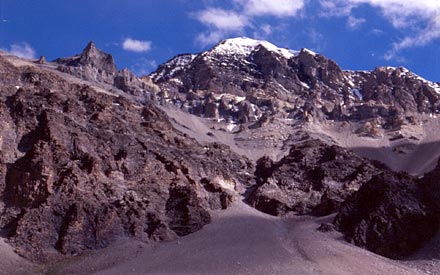Physical Features |
|
| Italy is shaped like a cowboy's boot
about to hoof the island of Sicily. Its total area,
including Sicily, Sardinia and the lesser islands, mainly
in the Tyrrhenian Sea, is 301,054 sq. kms. However, two
miniscule but sovereign states are enclosed within this
land mass: the Vatican City occupies 0.44 sq. kms. in
Rome while the ancient republic of San Marino latches
onto 61 sq. kms. around Mt. Titano, just west of Rimini
on the Adriatic coast. Italy's northwestern riviera,
centered around Genoa, is washed by the Ligurian Sea
while the bulk of the country's western flank faces the
Tyrrhenian Sea. From the heel to the toe, Italy has sandy
and pebbly beaches on the Ionian Sea. The entire eastern
shelf forms an unbroken, generally sandy coastline, along
the Adriatic Sea. The total length of the coastline
measures 8,500 kms. In the north the Alpine chain stretches for 1,220 kms. separating Italy from France, Switzerland, Austria and Yugoslavia. Many of the most famous ski resorts are to be found among the highest peaks, including Mont Blanc (4,810 m.), Mont Rosa (4,638 m.), the Matterhorn (4,478 m.), and the Gran Paradiso group (4,061 m.). High above Venice on the northeastern sector are the isolated massifs of the Dolomites, topped by Marmolada (3,342 m.). A mountain range known as the Apennines rolls down the length of the peninsula, starting in the extreme northwest and continuing, after the Straits of Messina, on to Sicily. They reach their highest point in the Gran Sasso at Monte Corno (2,914 m.), from whose summit one can peer down onto the Adriatic and Tyrrhenian Seas.The Apennines in Sicily are crowned by Mount Etna (3,276 m.), which is also the largest active volcano in Europe. None of these peaks is inaccessible for Italian engineers have mastered their terrain by bridging rivers and slicing through granite, limestone, forests and every other obstacle to link the valleys and mountains with viaducts carrying the great autostradas. The Po valley is the largest of the lowland areas seldom more than 200 m. above sea level. This, the largest plain in southern Europe, and abundantly fertile since the Middle Ages. is watered by the River Po and its numerous tributaries, The other major plains of Italy are the Tavoliere delle Puglie, Salento (between the Adriatic and Ionian seas), Campania, Agro Pontino (near Rome) and the Tuscan Maremma. |
|
 |
 |